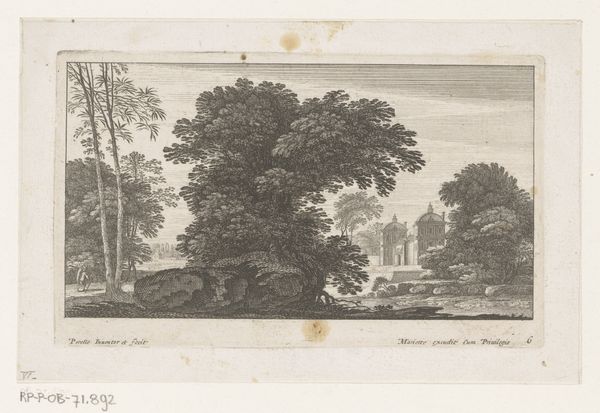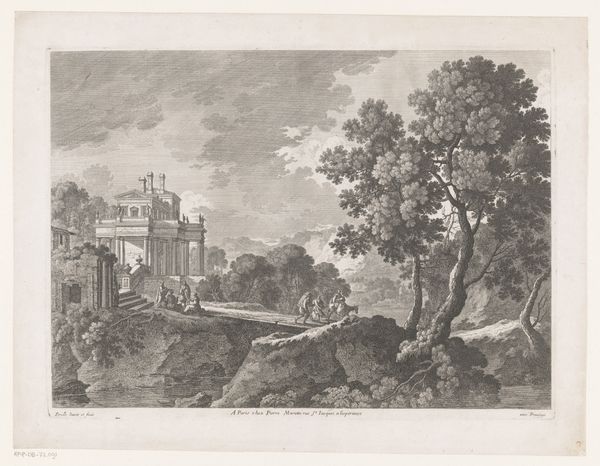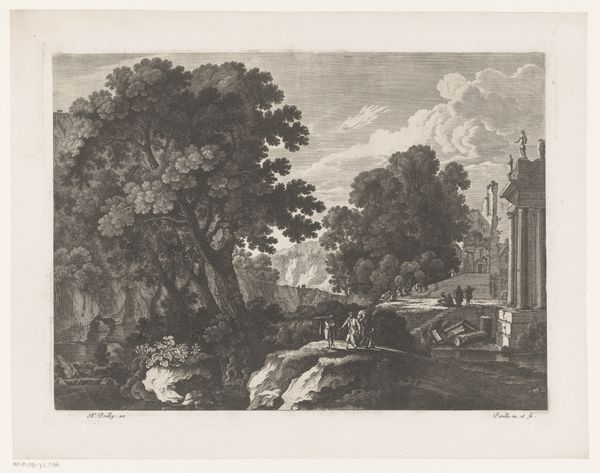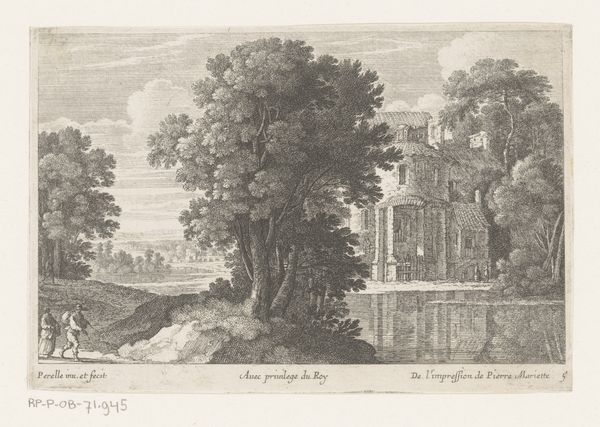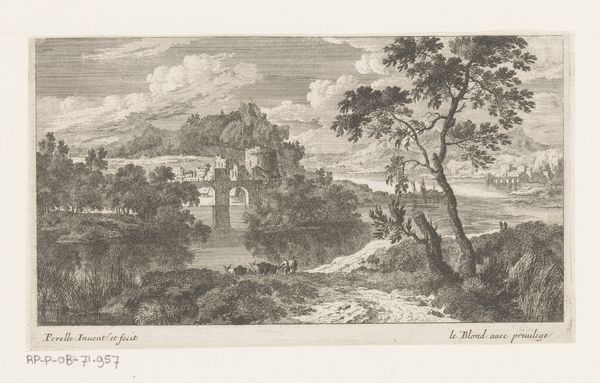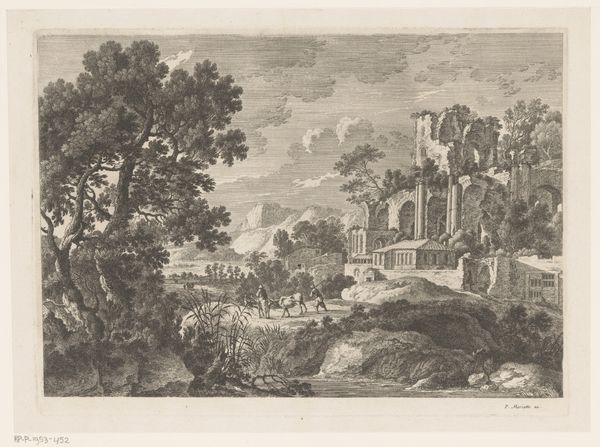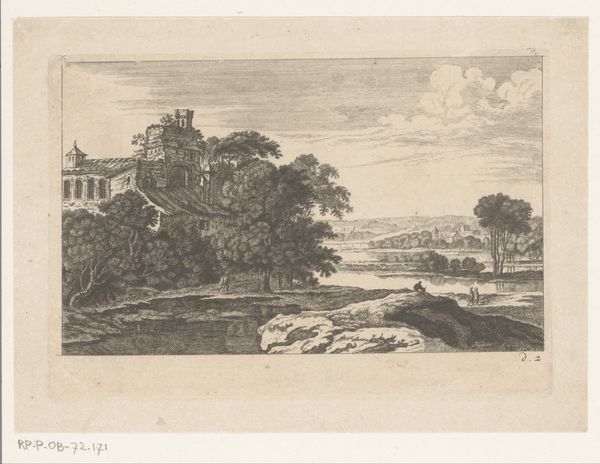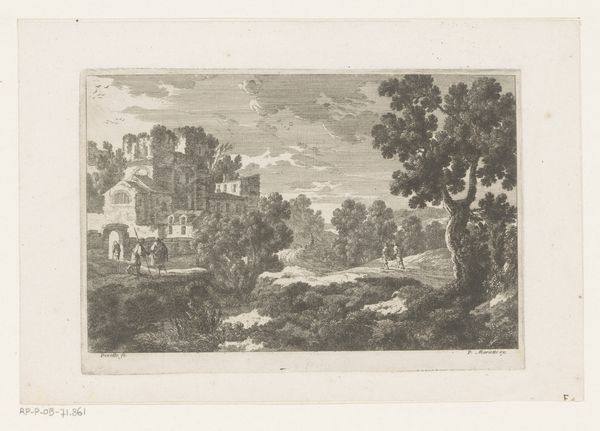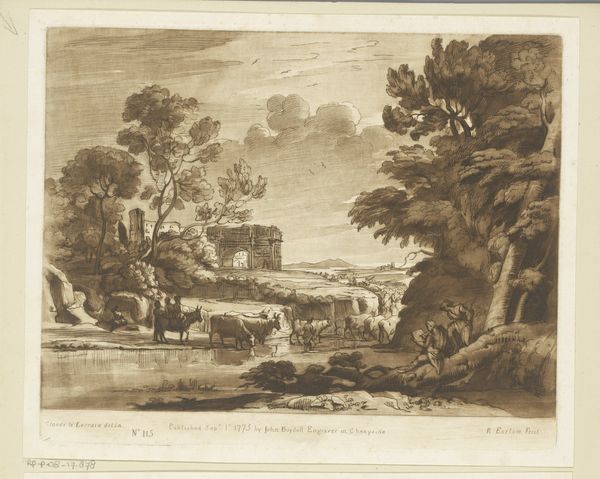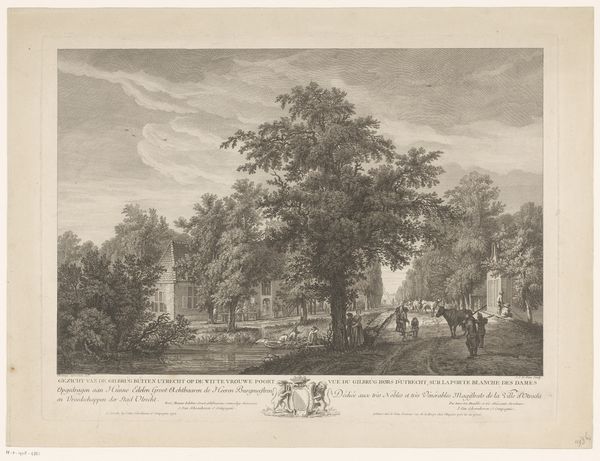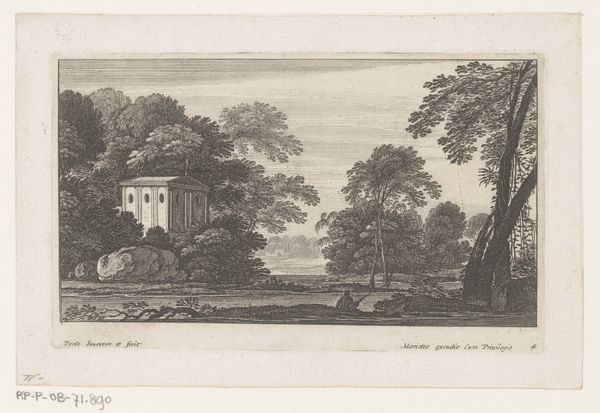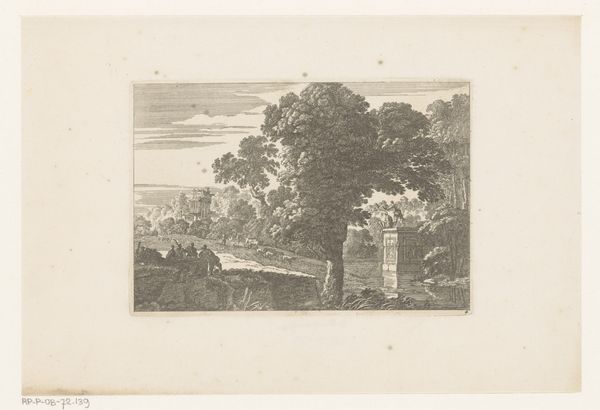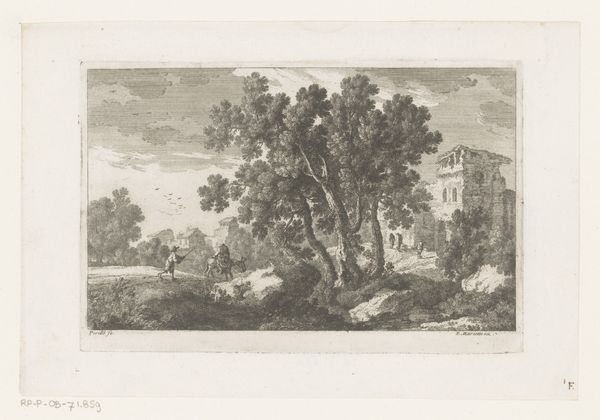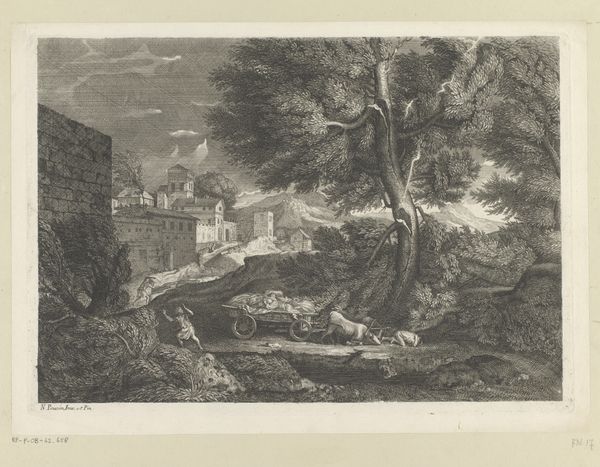
print, etching, engraving
#
baroque
#
dutch-golden-age
# print
#
etching
#
landscape
#
engraving
Dimensions: height 133 mm, width 191 mm
Copyright: Rijks Museum: Open Domain
Curator: Here at the Rijksmuseum, we have a remarkable etching titled "Landschap met ruïne aan water" by Nicolas Perelle, dating from somewhere between 1628 and 1679. It’s an interesting piece reflecting both Baroque and Dutch Golden Age sensibilities. Editor: Wow, that's quite a range of time there for the date. It feels wistful, almost mournful. The soft grays, the skeletal architecture... There's a real feeling of the passing of time. It almost feels like an imagined theatre set more than a landscape study, which intrigues me deeply. Curator: The melancholic mood aligns with the vanitas tradition that was emerging in Dutch Golden Age painting during this time. Remember, these weren't just scenic views; they often carried allegorical meanings. And with that timeline… he may have worked on it over many years or reworked existing plates. Editor: I do see how that crumbling ruin stands as a metaphor, hinting at the transience of earthly glories. I can't help thinking about the politics implicit in such representations. These landowners likely saw such depictions of entropy and ruin in starkly different ways than the peasant families living and working in such sites! It brings to mind issues of class and the romanticization of decline that we still grapple with today. Curator: A good point, especially given Perelle's place within the French printmaking establishment later in life. This particular print shows that he was quite skilled at rendering details – the way the light reflects on the water’s surface, or how he captured the foliage... you sense his almost reverential wonderment when gazing on such things. Editor: Wonderment and exploitation are often twinned concepts, especially where land is concerned! All that delicate cross-hatching creates a texture that makes me want to run my hands across the surface, almost like feeling the weathered stones of the ruins. It definitely speaks to the tensions inherent in pastoral representations of that era, doesn’t it? Curator: Precisely. In the end, I view the work through the artist's desire to simply express a beautiful atmosphere—the hazy sky, the figures wandering... he probably meant for it to simply look pleasing and commercially viable. Editor: Ah, so you’re more about the aesthetic allure! I find it so much more engaging if we ask questions that allow us to really unravel its place in our current socio-political fabric, you know? I suppose that’s where our sensibilities part ways...as it should.
Comments
No comments
Be the first to comment and join the conversation on the ultimate creative platform.
